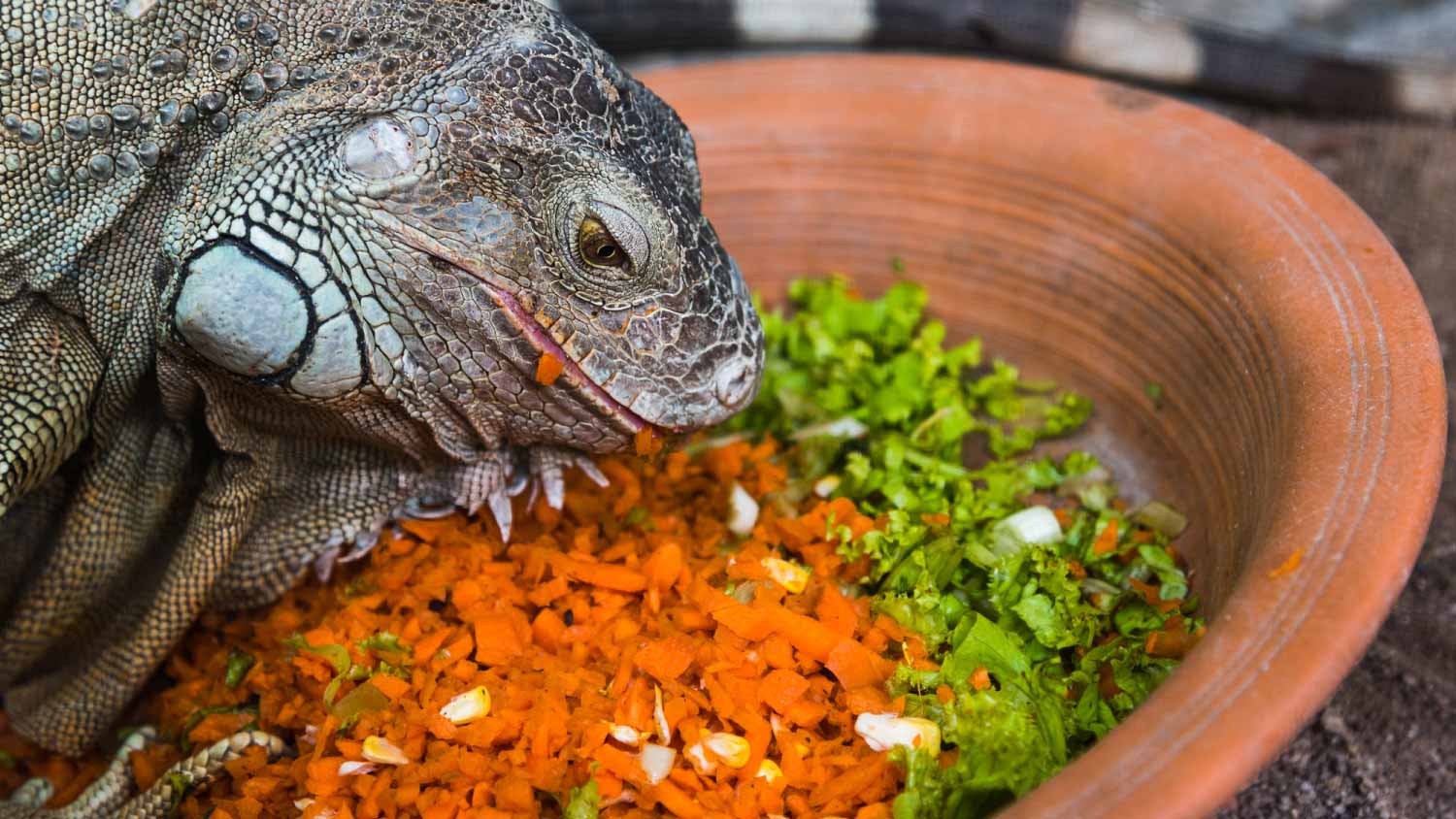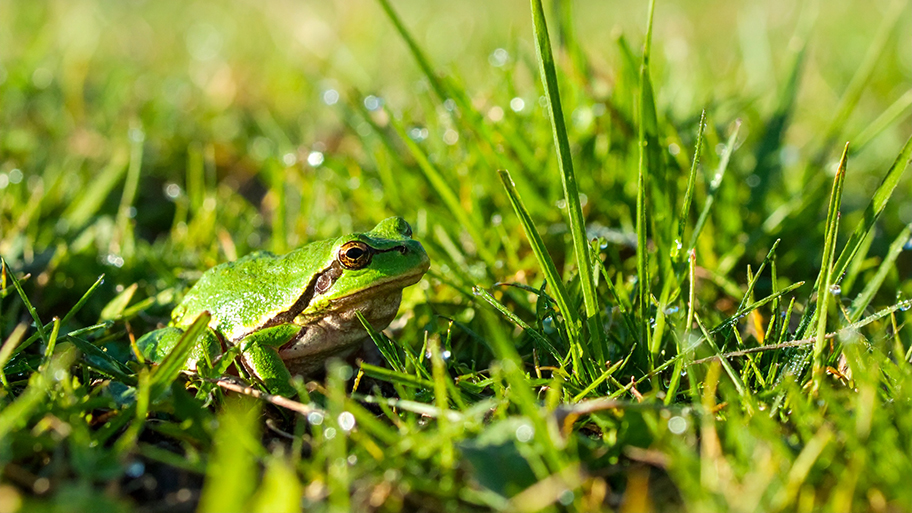
If iguanas are plaguing your home and destroying your property, proper removal is key. Learn the costs to expect from an iguana removal service.
Provide fruity fare to lure these lizards into the trap


The best baits for iguana traps are ripe, sweet, non-citrus fruits.
Iguanas also like some leafy greens and tropical flowers.
It’s best to call a wildlife control specialist to remove trapped iguanas.
Exclusion and habitat modification techniques are more effective in keeping iguanas away long term.
In recent years, there has been an explosion in the population of invasive green iguanas in Florida. While many people choose to live peaceably with these exotic reptiles, you might be considering trapping nuisance individuals that damage your landscape, leave a mass of droppings, or burrow under your home’s foundation. You’ll want to use the best bait for iguana traps to increase the likelihood of containing these creatures.
Check out this list of tasty temptations, additional trapping advice, and other suggestions for keeping iguanas out of your yard.

Green iguanas sometimes eat insects, snails, bird eggs, and even dead animals, but they won’t entice them into the trap the way their favorite snack will. Here are some of the best baits for iguana traps:
Ripe non-citrus fruits: Bananas, mango, strawberries, watermelon, grapes, and papaya are some of the best baits for iguana traps. Avoid citrus fruits, which can naturally deter these reptiles.
Flowers: Add hibiscus, jasmine, orchids, nasturtiums, or bougainvillea to the traps alongside some fruit.
Veggies: Try kale, broccoli, beets, collard greens, and lettuce if the iguanas don't fancy the fruit baits.
Where and how you position the food is as important as selecting the best bait for an iguana trap. Some other considerations include:
Pre-bait the trap: Put bait around and in front of the trap for a few days before setting it to help habituate wary lizards to this new object in their environment.
Create a bait trail: Lay out a line of enticing fruit leading up to the trap to increase the chance of scent-driven iguanas finding it and entering.
Protect the bait: Cover the trap, or at least the area where the bait is, to prevent wily iguanas from stealing the bait from outside the trap.
Position the bait carefully: Place the fruit at the back of the trap so the iguana fully enters and triggers the door-closing mechanism.
Experiment with baits: If mashed bananas or melon cubes don’t tempt the iguana, switch things up after a few days. They might be bigger fans of veggies or flowers.
Once you’ve got a green iguana in the trap, you can’t just take it to the local lake and let it loose. Relocating these invasive species is illegal, and Florida’s wildlife control also discourages keeping these animals as pets.
Green iguanas are only protected by anti-cruelty laws, meaning homeowners are encouraged to euthanize the trapped animals humanely in most cases. It’s best to hire a wildlife control company near you that specializes in iguana removal to handle the job safely. Iguanas are powerful animals with sharp claws, and their droppings can contain salmonella bacteria.
While you wait for the professionals to arrive, keep the trap in a shaded position and consider covering it with burlap to reduce the iguana's stress. On average, professional iguana removal costs $1,250, but if you trap the lizard yourself first, the cost will be significantly less.
Trapping should always be a last resort for getting rid of nuisance iguanas. Often, no sooner have you gotten rid of one than another becomes a regular yard visitor. Using the following techniques is the best long-term strategy is to keep these lizards out of your yard:
Exclusion: Install cages around prized plants and sheet metal around tree bases to prevent climbing. Consider electric fencing and underground L-shaped barriers to discourage digging under structures.
Habitat modification: Avoid planting species iguanas love and consider growing thick-leaved plants or iguana-repellent milkweed or oleander. Also, fill in holes that act as burrows and trim overgrown shrubs that offer attractive coverage.
Hazing: Things like wind chimes, hanging CDs with reflective surfaces, and motion-activated sprinklers can help when used alongside the above strategies. Mix up where and how you use hazing techniques so the iguanas don’t get habituated.
Repellents: You could try applying a commercial iguana repellent near prized plants, but don’t expect miracles, and reapply regularly.
From average costs to expert advice, get all the answers you need to get your job done.

If iguanas are plaguing your home and destroying your property, proper removal is key. Learn the costs to expect from an iguana removal service.

When budgeting for possum removal costs, consider number of animals, location, method of removal, and whether you do it yourself or hire a professional.

When calculating wildlife removal costs, you’ll need to consider the type, size, and amount of animals. Our guide will show you the wildlife removal cost.

Skunks aren’t aggressive, but they emit a noxious, lingering spray when under threat. Learn how to get rid of skunks around your home to avert their aroma.

Uncover the subterranean showdown in your yard: Voles vs. Moles. Explore what to know about their differences, behaviors, and destructive habits.

Discover how to keep frogs away using humane tactics. From fences and barriers to decoys and repellents, learn how to maintain a frog-free environment in your yard.